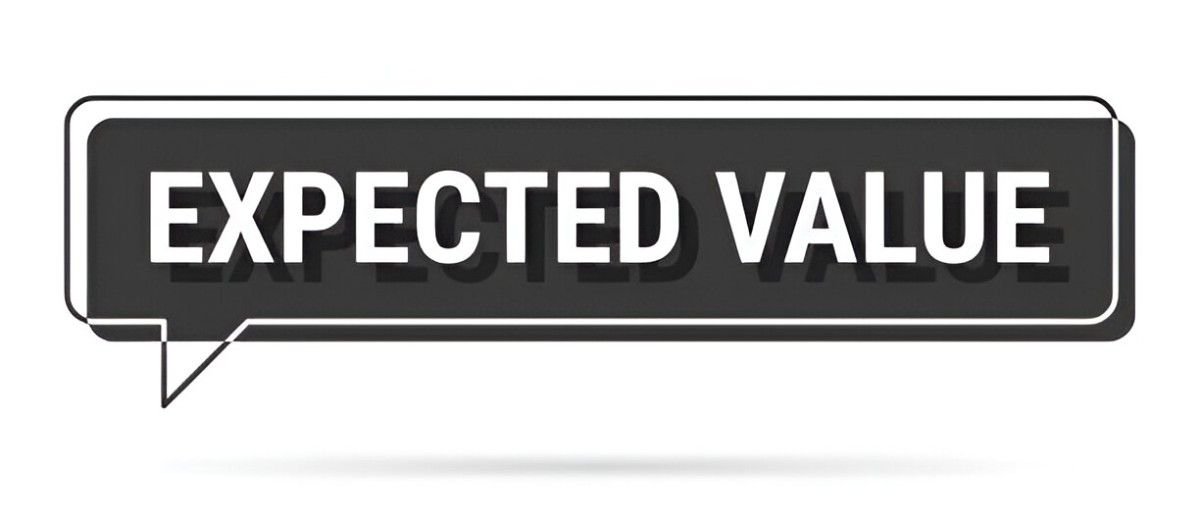Expected value is a fundamental concept in probability, finance, and decision-making. Whether you’re evaluating investments, playing poker, or assessing business risks, understanding expected value helps you make rational choices. In this article, I break down what expected value means, how to calculate it, and where it applies in real-world scenarios.
Table of Contents
What Is Expected Value?
Expected value (EV) represents the long-term average outcome of a random event if repeated many times. It weighs all possible outcomes by their probabilities, providing a single summary measure. Mathematically, for a discrete random variable with possible outcomes and probabilities , the expected value is:
For continuous variables, we use integration:
where is the probability density function.
A Simple Example: Rolling a Die
Consider a fair six-sided die. Each outcome (1 through 6) has a probability of . The expected value is:
This means, over many rolls, the average value converges to 3.5, even though 3.5 itself is not a possible outcome in a single roll.
Expected Value in Finance and Investing
Investors use expected value to assess potential returns. Suppose you have two investment options:
- Stock A: 60% chance of a 10% return, 40% chance of a -5% loss.
- Stock B: 80% chance of a 5% return, 20% chance of a -2% loss.
Calculating EV for both:
Stock A has a higher expected return, but it also carries more risk. Expected value alone doesn’t capture volatility, so investors often combine it with variance or standard deviation.
Comparing Investment Strategies
| Strategy | Probability of Gain | Gain (%) | Probability of Loss | Loss (%) | Expected Value (%) |
|---|---|---|---|---|---|
| Aggressive | 60% | 15 | 40% | -10 | 5 |
| Moderate | 75% | 8 | 25% | -3 | 5.25 |
| Conservative | 90% | 4 | 10% | -1 | 3.5 |
Here, the moderate strategy has the highest EV, but risk-averse investors might prefer the conservative approach.
Expected Value in Gambling and Decision-Making
Casino games are designed with negative expected values for players, ensuring house profitability. Take roulette:
- American Roulette: 38 slots (1-36, 0, 00). Betting $1 on a single number pays $35.
- Probability of winning:
- Probability of losing:
The expected value is:
This means, per $1 bet, you lose about 5.26 cents on average.
Poker and Expected Value
In poker, calculating EV helps decide whether to call, fold, or raise. Suppose:
- Pot size: $100
- Opponent bets $20
- You estimate a 25% chance of winning
The EV of calling is:
A positive EV suggests calling is profitable in the long run.
Business Applications: Risk Assessment
Businesses use expected value to evaluate projects. Suppose a company considers launching a product:
- Development cost: $500,000
- 70% chance of success (profit: $1,000,000)
- 30% chance of failure (profit: $0)
The expected net gain is:
A positive EV supports the decision to proceed.
Expected Value vs. Utility Theory
While EV is mathematically sound, humans don’t always follow it due to risk aversion. Losing $1,000 hurts more than gaining $1,000 feels good. Daniel Bernoulli introduced utility theory to account for this, suggesting decisions depend on subjective value rather than pure monetary outcomes.
Limitations of Expected Value
- Ignores Variance: Two investments with the same EV may have different risk levels.
- Assumes Repeatability: EV works best for repeated events, not one-time decisions.
- Probability Estimation Errors: Garbage in, garbage out—if probabilities are wrong, EV is misleading.
Conclusion
Expected value is a powerful tool for rational decision-making in finance, gambling, and business. By quantifying average outcomes, it helps compare choices objectively. However, it’s not a standalone solution—risk tolerance, utility, and context matter. Mastering EV means balancing math with real-world judgment.





